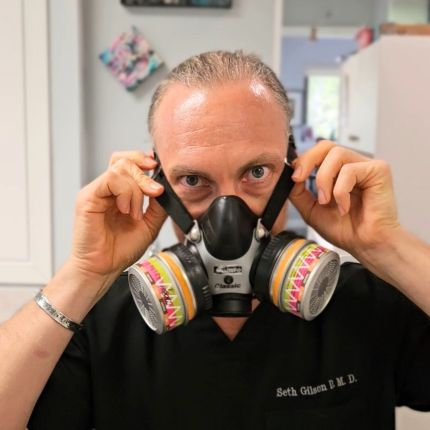In the realm of dentistry, the use of mercury amalgam fillings has long been a subject of debate and concern.
While these fillings have been utilized for decades due to their durability and cost-effectiveness, growing awareness of their potential health risks has prompted a reevaluation of their safety.
Central to this discussion is the issue of mercury toxicity, which poses significant dangers to both oral and systemic health. In response to these concerns, the International Academy of Oral Medicine and Toxicology (IAOMT) has championed the development of the Safe Mercury Amalgam Removal Technique (SMART), providing a standardized approach to minimize exposure during the removal process.
Understanding Mercury Amalgam Fillings:
Mercury amalgam fillings, also known as silver fillings, consist of a mixture of metals including mercury, silver, tin, and copper. While mercury amalgam has been widely used in dentistry for its durability and strength, it also poses inherent risks due to the volatile nature of mercury. Over time, these fillings can release mercury vapor, which is absorbed by the body and may contribute to a range of health issues, including neurological disorders, autoimmune conditions, and allergic reactions.
The Risks of Mercury Toxicity:
Mercury is a potent neurotoxin that can have detrimental effects on the central nervous system, particularly in vulnerable populations such as children, pregnant women, and individuals with pre-existing health conditions. Chronic exposure to mercury vapor from amalgam fillings has been linked to cognitive impairments, mood disorders, and systemic inflammation, highlighting the need for proactive measures to mitigate these risks.
The SMART Approach to Safe Removal:
Recognizing the dangers associated with mercury amalgam fillings, the IAOMT developed the Safe Mercury Amalgam Removal Technique (SMART) as a standardized protocol for the safe removal of these fillings. The SMART technique incorporates a series of rigorous precautions to minimize exposure to mercury vapor and particles during the removal process, including the use of protective barriers, high-volume suction, and respiratory protection for both patients and dental staff.
Key components of the SMART technique include:
- Isolation: Utilizing rubber dams and high-volume suction to prevent the inhalation or ingestion of mercury particles.
- Protection: Employing respiratory masks and protective gear to minimize exposure to mercury vapor.
- Filtration: Implementing air filtration systems and proper ventilation to remove mercury vapor from the treatment area.
- Post-Removal Protocols: Providing patients with guidance on detoxification and supportive therapies following amalgam removal to aid in the elimination of mercury from the body.
Empowering Informed Choices:
In light of the potential health risks associated with mercury amalgam fillings, individuals are encouraged to educate themselves about the available alternatives and the importance of safe removal. By consulting with mercury-safe dentists trained in the SMART technique, patients can make informed decisions about their oral health and take proactive steps to safeguard their overall well-being.
Conclusion:
The hazards of mercury toxicity extend far beyond the confines of dental offices, underscoring the urgent need for precautionary measures to protect both patients and dental professionals. Through the implementation of the Safe Mercury Amalgam Removal Technique (SMART), the IAOMT has pioneered a standardized approach to minimize exposure and promote safer practices in the removal of mercury amalgam fillings. By embracing the principles of SMART and advocating for mercury-safe dentistry, we can collectively strive towards a future where oral health is synonymous with holistic well-being, free from the dangers of mercury toxicity.
-
Product on sale
 Kids Mineral ToothpasteOriginal price was: $12.00.$10.80Current price is: $10.80.
Kids Mineral ToothpasteOriginal price was: $12.00.$10.80Current price is: $10.80. -
Product on sale
 Mineral ToothpasteOriginal price was: $12.00.$10.80Current price is: $10.80.
Mineral ToothpasteOriginal price was: $12.00.$10.80Current price is: $10.80. -
 Bristle Oral Health Test$169.00
Bristle Oral Health Test$169.00
Disclaimer
This content is for educational purposes only and isn’t a substitute for professional care by a doctor or qualified medical professional. This information is provided with the understanding it doesn’t constitute medical or professional advice or services. For help, seek a qualified medical practitioner.
For a functional medicine practitioner visit ifm.org, for a biological dentist visit IAOMT.org or askthedentist.com. It’s important you have a licensed healthcare practitioner in your corner who can help you make progress when it comes to your health.

Do you want to further discuss your oral health?
COME VISIT ME! Our Biological Dentist practice is centrally located in North Miami-Dade County in the City of Aventura, Fl.
Contact Us by phone: (305) 933-3350 or use the New Patient form, clicking the button.
SETH GILSON D.M.D – BIOLOGICAL DENTIST






